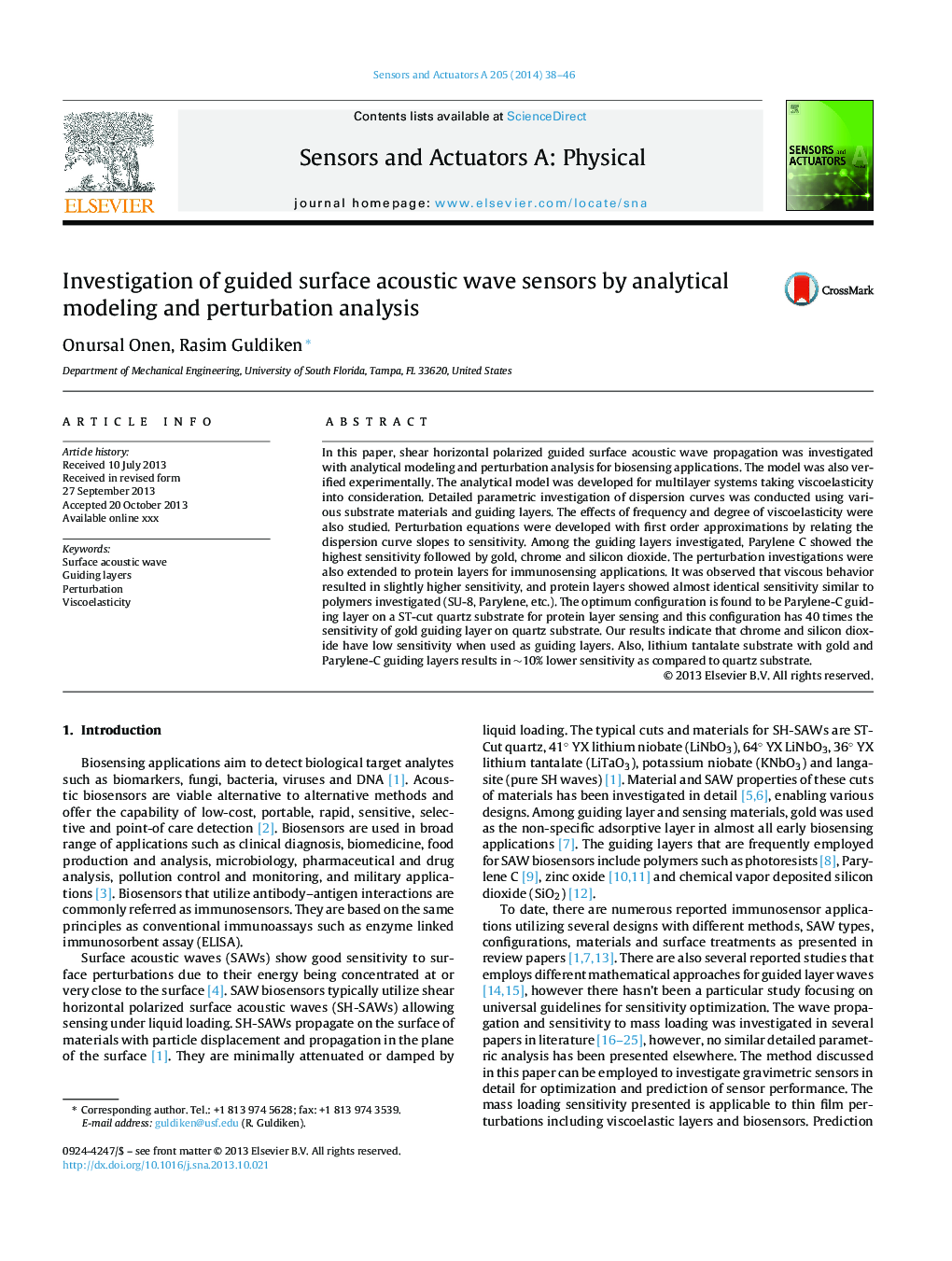| Article ID | Journal | Published Year | Pages | File Type |
|---|---|---|---|---|
| 7137526 | Sensors and Actuators A: Physical | 2014 | 9 Pages |
Abstract
In this paper, shear horizontal polarized guided surface acoustic wave propagation was investigated with analytical modeling and perturbation analysis for biosensing applications. The model was also verified experimentally. The analytical model was developed for multilayer systems taking viscoelasticity into consideration. Detailed parametric investigation of dispersion curves was conducted using various substrate materials and guiding layers. The effects of frequency and degree of viscoelasticity were also studied. Perturbation equations were developed with first order approximations by relating the dispersion curve slopes to sensitivity. Among the guiding layers investigated, Parylene C showed the highest sensitivity followed by gold, chrome and silicon dioxide. The perturbation investigations were also extended to protein layers for immunosensing applications. It was observed that viscous behavior resulted in slightly higher sensitivity, and protein layers showed almost identical sensitivity similar to polymers investigated (SU-8, Parylene, etc.). The optimum configuration is found to be Parylene-C guiding layer on a ST-cut quartz substrate for protein layer sensing and this configuration has 40 times the sensitivity of gold guiding layer on quartz substrate. Our results indicate that chrome and silicon dioxide have low sensitivity when used as guiding layers. Also, lithium tantalate substrate with gold and Parylene-C guiding layers results in â¼10% lower sensitivity as compared to quartz substrate.
Related Topics
Physical Sciences and Engineering
Chemistry
Electrochemistry
Authors
Onursal Onen, Rasim Guldiken,
